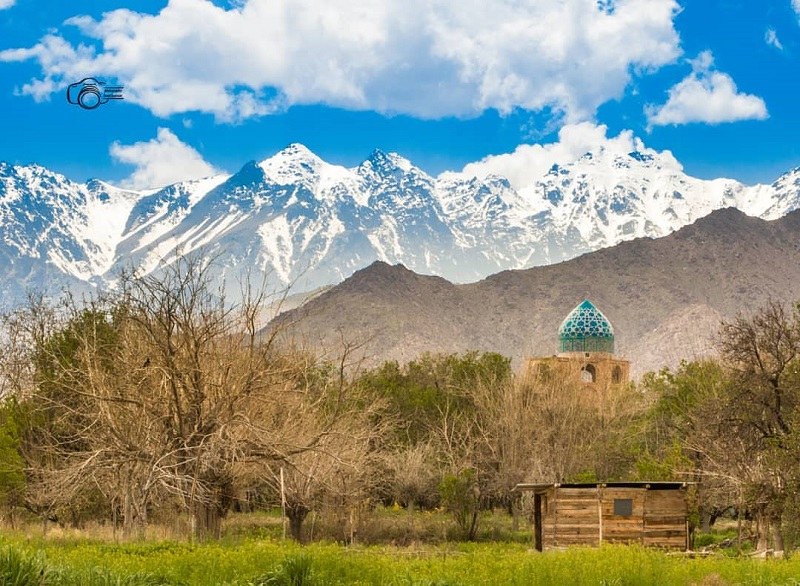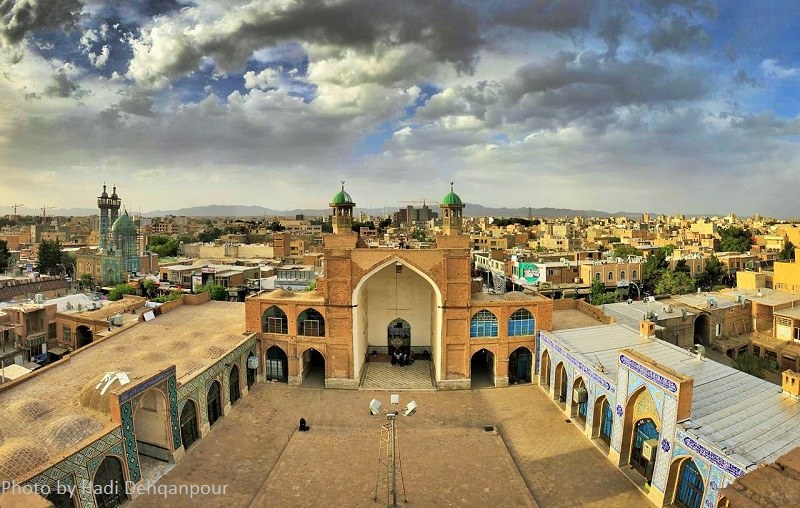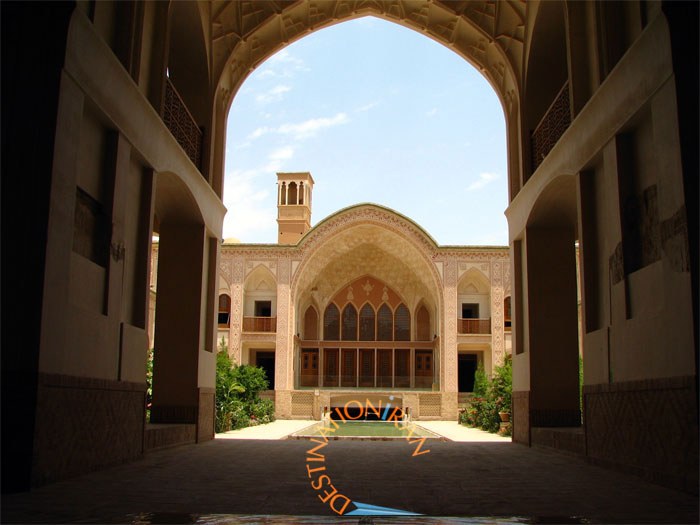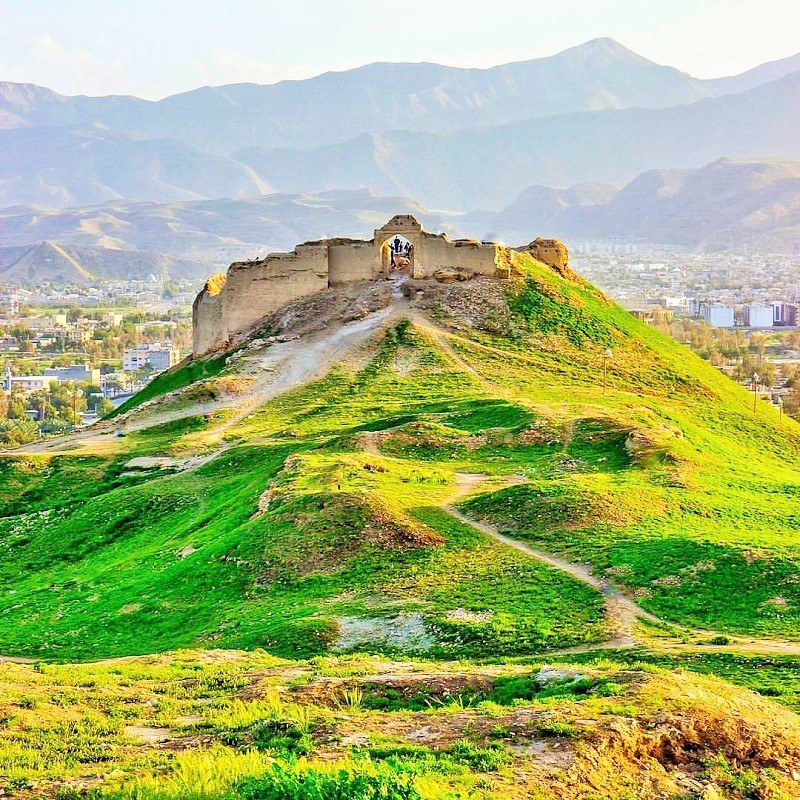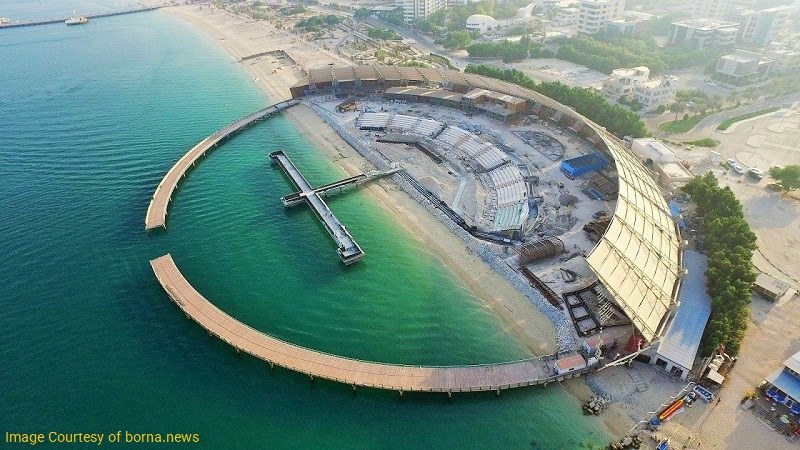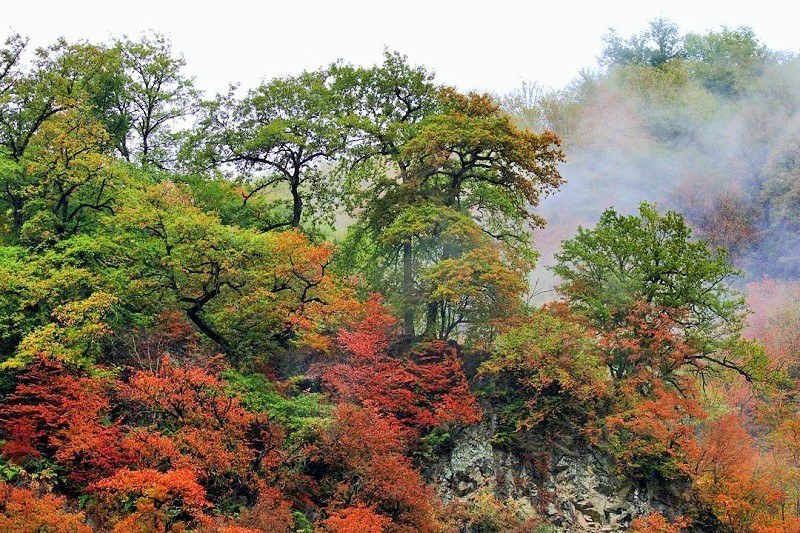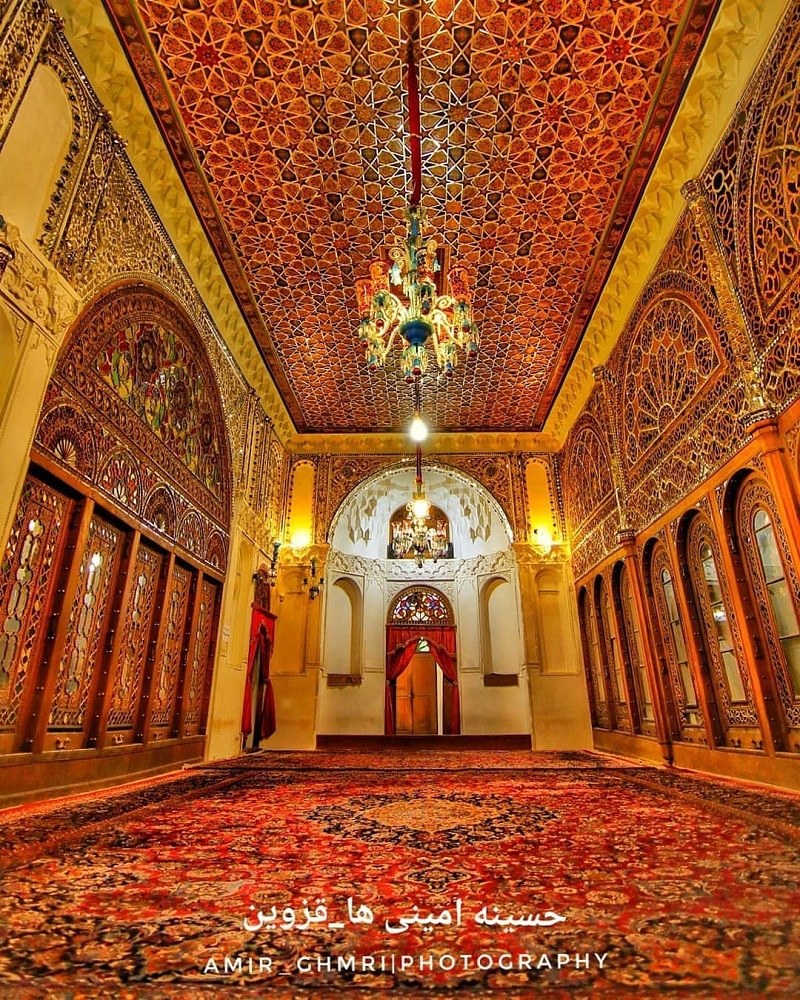
Introduction of Qazvin
There are plenty of Qazvin tourist attractions inside and outside this ancient city. Some are historic sites and some are natural spots. You will discover the highlights of these sites here.
Qazvin is one of the oldest cities in Iran. According to several historical sources, Sepah Street in Qazvin is the first street built in Iran. It shows the importance of Qazvin. Once, during a period of Iranian history, the city used to be the capital of Iran. There are also many gardens and monuments in Qazvin.
The bazaar of Qazvin and its caravansaries are also some of the attractions of Qazvin. The pastries of the cityhave many fans. Of course, Qazvin has a very wonderful nature too.
Geography of Qazvin
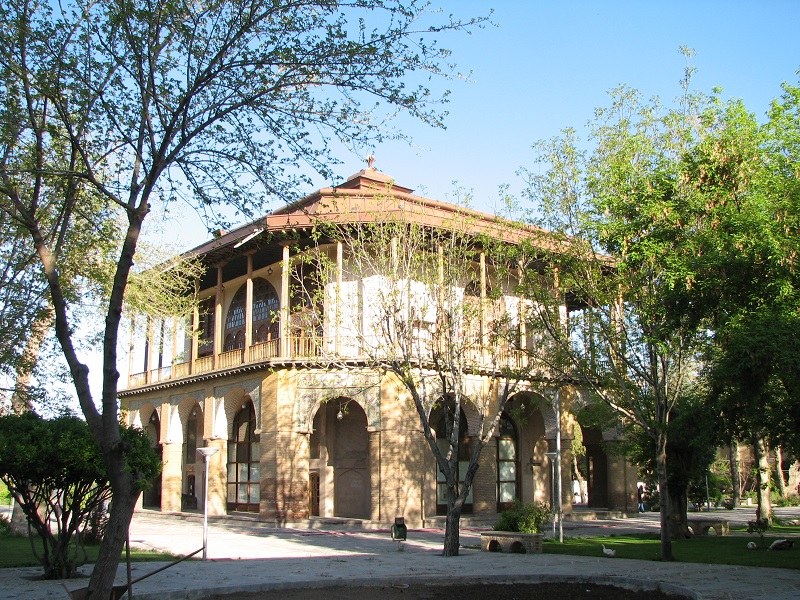
Qazvin province has a border with Gilan province at its north, with Alborz province at its east, with Zanjan and Hamedan provinces at its west, and with Markazi province at its south. Qazvin is located on the southern foothills of Alborz mountain range.
Considering the location of Qazvin, this city has been a transit point for the connection between the center and the west of Iran. Therefore, due to the strategic location of Qazvin, the Safavid dynasty choose it as the capital of Iran.
The altitude of this province is 1304 m from the sea level. As the mountain range of central Alborz and the mountains of Ramand of Kharaqan surrounded Qazvin province, the weather of the province is cold and mountainous with an average of 10°C during the year.
In Qazvin, July and August are the hottest months of the year, while January and February are the coldest months. The average of minimum and maximum annual temperature is respectively 2°C and 18°C.
Relative humidity in Qazvin reaches the highest point during winter months. With a minimum relative humidity, the summer is dry and hot in Qazvin.
The cold winds blow from the northwest and north to Qazvin, which is the dominant wind of the city. The annual average relative humidity in Qazvin is 51%.
How to Get There
It is interesting to know that the city of Qazvin has an airport, but the airlines have not started their flight schedules as the airport does not have any passenger. To access Qazvin, you can use a train, bus, minibus, taxi or private car.
- If you are heading from Tehran to Qazvin, you can take the train to Qazvin Railway Station, located south of the city, and then take a taxi to the city center.
- The bus terminal of Qazvin is also located in the south of the city, but there are also many taxis taking you to the city center.
- If you want to travel there in a private car from Tehran, you can enter the highway of Tehran-Karaj-Qazvin and get there in two or three hours’ drive (depending on traffic conditions).
Population and Economy of Qazvin
Based on the Iranian 2016 census, the population of Qazvin province was 1,273,761.
Since Safavid era, many industrial units have been active in Qazvin City and have formed the major part of the city’s economy.
In the contemporary era, and exactly in 1967, the authorities built the first industrial city of Iran in Qazvin. It is called Alborz City. As of now, this province has eight industrial towns. Iran will soon add two new industrial towns to Qazvin.
Traditional pastries such as Baklava, fresh fruits, and nuts are the main souvenirs of Qazvin.
Handicrafts are other tourist attractions of this city and are very popular among visitors. Nevertheless, since the last few decades, the local people set up many new industries such as crystal and glass, steelmaking, galvanization, ceramics and household appliances in this city. Therefore, we can say that Qazvin is one of the industrial centers of Iran.
History of Qazvin City
There are hundreds of ancient mounds in Qazvin, such as the Sagezabad mound, which represents a 9,000-year-old settlement in this area. Different governors and rulers have considered the importance of the area. For example, during the rule of the Medes, this city was one of the major points in the country. At that time, “Mag Bito” fortress, located in the southwest of Qazvin, was under the reign of Hanna Syroka, one of the Median governors.
Historians believe that Shapur II, also known as Shapur II the Great, constructed the current city of Qazvin, and after many years, other governors created military and economic bases in the city.
Historical Attractions of the City
Most of the historical attractions of Qazvin are located within the city.
Chehelsotun Palace
The Safavid era’s building known as Chehelsotun Palace together with its museum make one of the most beautiful and most important historical monuments of Qazvin. Architects have built this palace during the Safavid period. Chehelsotun palace is an icon for this city.
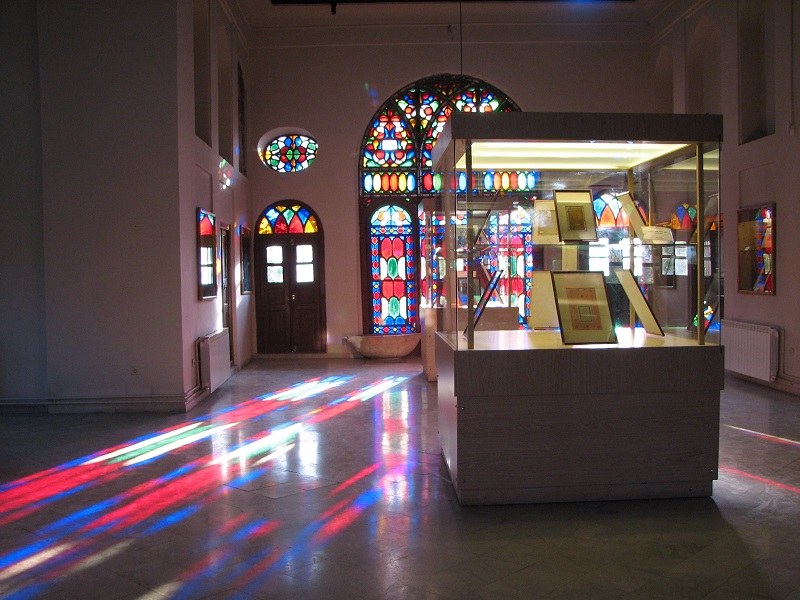
The Safavid era’s building known as Chehelsotun Palace together with its museum make one of the most beautiful and most important historical monuments of Qazvin. Architects have built this palace during the Safavid period. Chehelsotun palace is an icon for this city.
During the reign of the Safavid king, Tahmasp I, Qazvin was the capital of Iran. It was during this period that the architects built the Chehelsoton Palace. The construction of this Chehelsoton Palace was an inspiration for building the Chehelsotun of Esfahan. The Chehelsotun Palace of Qazvin is located in Azadi Square, known as Sabzeh Meydan.
The Safavid era’s building known as Chehelsotun Palace together with its museum make one of the most beautiful and most important historical monuments of Qazvin. Architects have built this palace during the Safavid period. Chehelsotun palace is an icon for this ancient city.
During the reign of the Safavid king, Tahmasp I, Qazvin was the capital of Iran. It was during this period that the architects built the Chehelsoton Palace. The construction of this Chehelsoton Palace was an inspiration for building the Chehelsotun of Esfahan. The Chehelsotun Palace of Qazvin is located in Azadi Square, known as Sabzeh Meydan.
Museum of Qazvin City
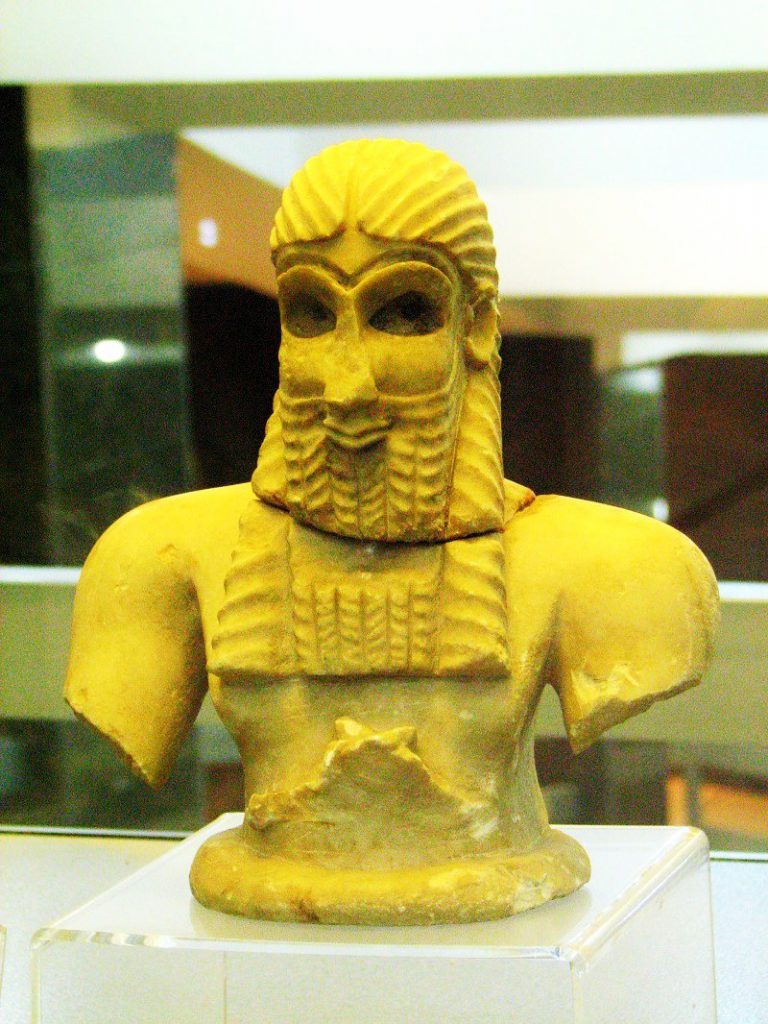
This museum is located in Azadi Square, or Sabzeh Meydan, and is located in the eastern side of the Chehelsotun Palace. In this museum, you can be acquainted with the archaeological findings of the prehistoric era, the pre-Islam era and the Post-Islam era of this city.
Grand Bazaar of Qazvin
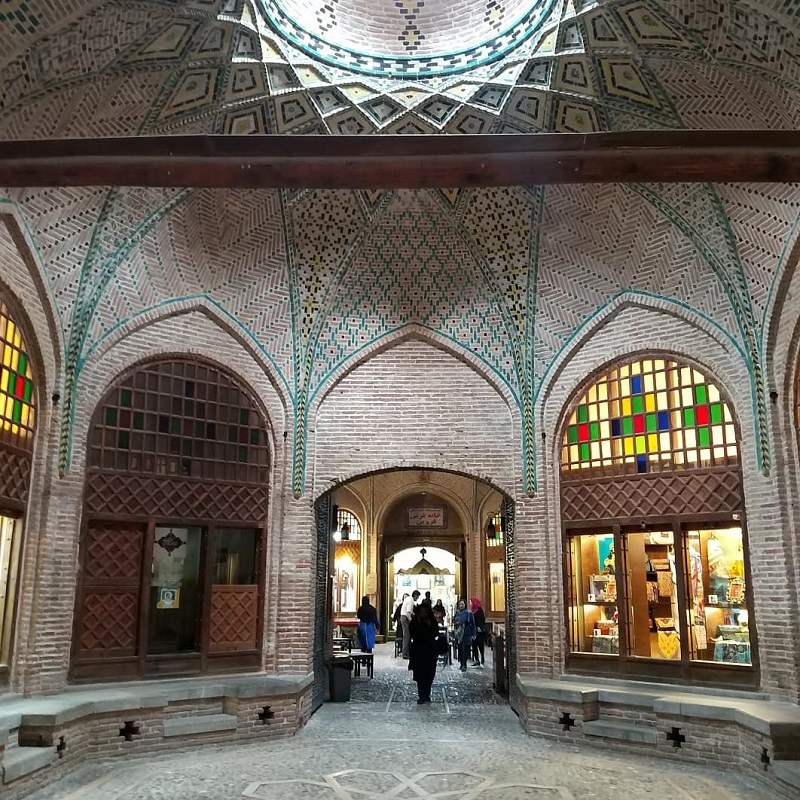
The Grand Bazaar is one of the most beautiful Iranian bazaars. It is a symbol of the clever architecture of Iran, which attracts several visitors. The Grand Bazaar of Qazvin has remained from the Safavid period and beyond.
The Grand Bazaar has diverse sections such as Caravansary of Sa’d al-Saltaneh, Caravansary of Vazir, Caravansary of Haj Reza, Razavi Caravansary (also known as Caravansary of Shah), open and covered caravansaries and Qaysarie Raw.
The largest urban caravansary complex of Iran is Caravansary of Sa’d al-Saltaneh, located in the Grand Bazaar of Qazvin. This caravansary dates back to the Nasser-al-Din Shah, the Qajar king.
The Grand Bazaar of this city is located in Imam Khomeini Street.
Qazvin Grand Mosque
The Grand Mosque (also known as the Jameh Mosque) of Qazvin used to be a fire temple in the pre-Islam period, which was later rebuilt during the Harun al-Rashid era, the fifth Abbasid Caliph. This mosque is a collection of architectural styles of various historical eras. One can notice the architecture styles of Seljuk, Safavid and, to some extent, Qajar periods.
The Jameh Mosque of Qazvin, known also as Atiq Mosque, is located on Sepah Street (Shohada Street) and is open to the public every day.
Al-Nabi Mosque
Al-Nabi Mosque (Soltani Mosque) of this city dates back to Fath-Ali Shah Qajar. This mosque is one of Qazvin tourist attractions which you can visit together with the Grand Bazaar as it is close to it and located on Imam Khomeini Street. The mosque represents a particular aspect of the routine life of local people here.
Qajar Bath
The traditional Qajar bath is the largest and oldest bath of Qazvin that has been changed into a museum of anthropology. This bath is a remnant from the Safavid era. One of the commanders of Shah Abbas built this great bath.
Qajar bath dates back to more than 400 years ago. In this traditional bath, you can see the three sections to introduce tribes, customs, and crafts.
Museum of Qajar Bath is located on Obeid Zakani Street.
Ali Qapu Gate
During the reign of king Tahmasp I, the city had a palace called Ali Qapu. There is only one gate left from this 500-year-old monument. Ali Qapu gate is located near Sepah Street (Shohada Street).
Sardar Water Reservoir
Ab Anbar of Sardar-e Bozorg is a drinking water reservoir located on Railway Street. It is one of the greatest water reservoirs in Iran. This water reservoir is a large brick-made building belonging to the Safavid period.
Aminiha Hosseiniyeh

The word Hosseiniyeh refers to a building or congregation hall for Muslim Shiites to hold certain martyrdom commemoration ceremonies. Aminiha Hosseiniyeh is one such a building constructed in the 19th century. This structure is one of the top tourist attractions of Qazvin.
The building includes halls with beautiful sash windows. In the morning of Ashura, people lift away the sash windows to interconnect the three halls of the hosseiniyeh. This makes a large covered area with beautiful mirror decorations.
In the middle of the Great Hall, there are forty lights. The antique carpets of the hall are identical. In the basement of the halls, there are subbasement, Sherbet Khaneh (sweet drink house) and storage rooms.
Darb-e Koushk Gate
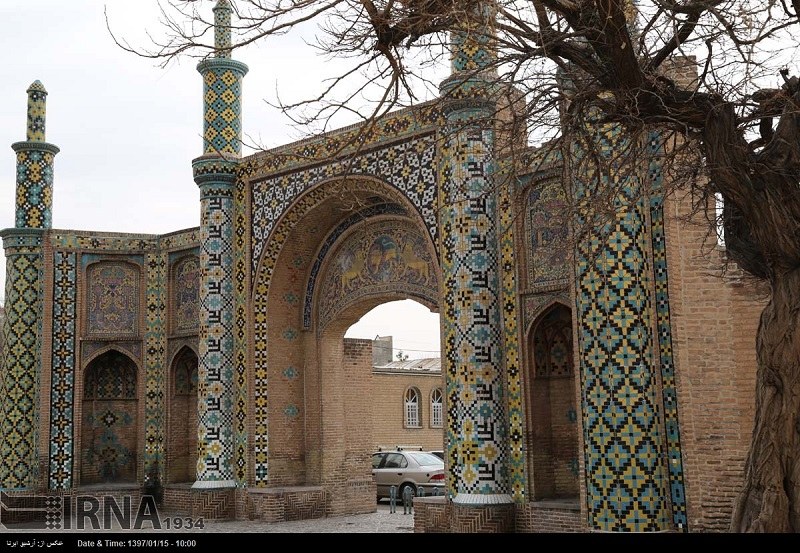
This gate is one of the oldest ones in the city. Darb-e Koushk Gate was toward Alamut, Rudbar, Koushk and the hunting grounds of northern Qazvin. This gate has a magnificent entrance with a semicircular arch.
Tehran Gate
The old Gateway toward Tehran, or the old gateway of Tehran, is a historical gate at the southeastern entrance of the city, where the old Qazvin-Tehran road used to start. The gate protected the city from enemy attacks, robbery and plunder of other cities.
In the beginning, the gate was located somewhat outside the city. Now, due to the expansion of the population, it is located within the city boundaries.
Dual Towers of Kharaqan
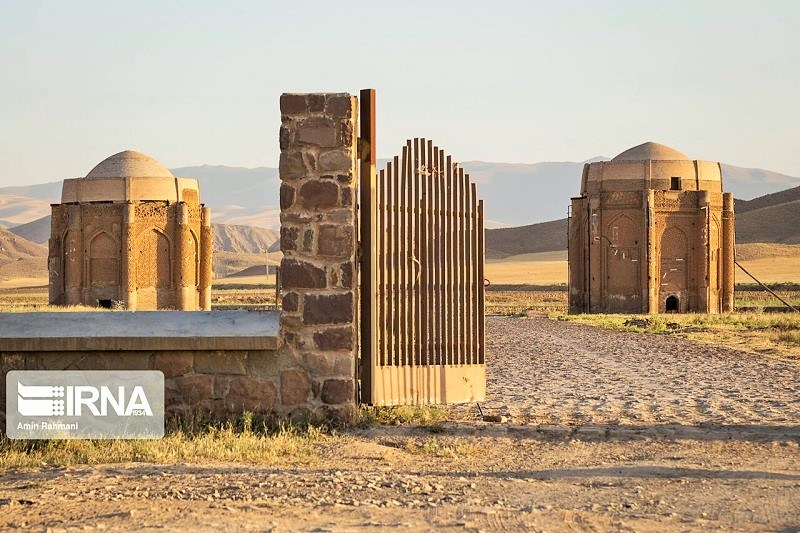
These towers are located 32 km southwest of Qazvin. The architecture of the dual towers of Kharaqan is a cylindrical fence. The towers are located in a wide area, with a little distance from each other. In many aspects, they are similar, but the eastern tower is older than the western.
This building is the first double-shell dome of the 12th century, which makes it an important dome in its kind.
Ismaili Fortresses and Alamut Castle
Ismaili Shia followers have built a number of castles in Qazvin province, some of which remained until today. Among them are Lamsar Castle, Samiran Castle, Meimoon Fortress and Alamut Castle.
Alamut Castle, the most famous of them, is located in the north of Gazorkhan village, Rudbar Alamut region, about 104 km northeast of the city, on the foothills of Alborz mountain range.
Natural attractions of Outside the City
Most of the natural attractions of Qazvin are located outside the city.
Ovan Lake of Alamut
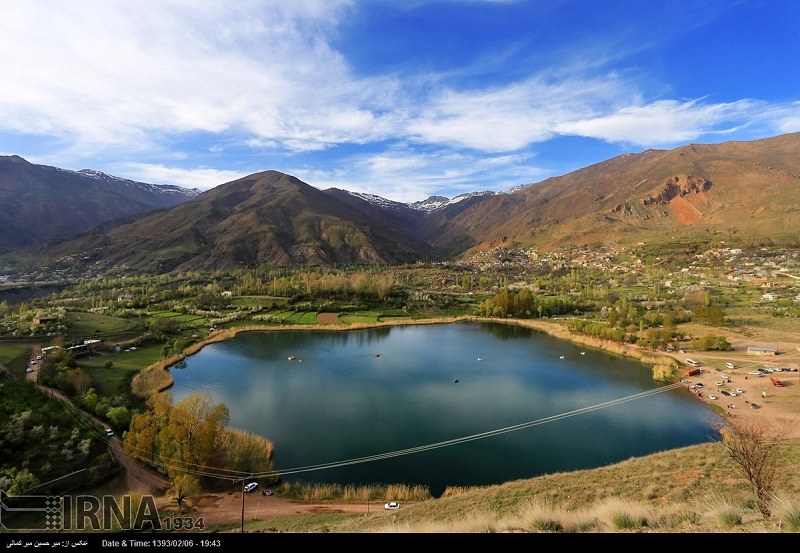
This Lake is located between the four villages of Ovan, Varbon, Zavardasht, and Zarabad, in Qazvin Province. This lake is more than 70,000 square meters. It is located at an altitude of 1,800 meters above sea level. According to estimations, landslides have created Ovan Lake some 500 years ago.
Varchor Waterfall
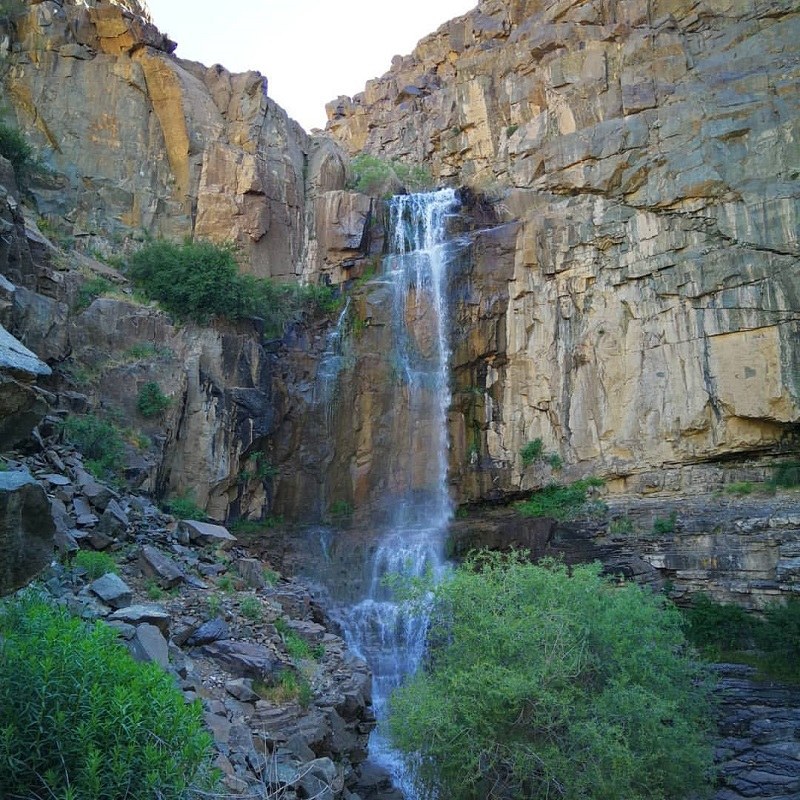
This waterfall is located 6 km east of Razjerd village of Qazvin. The waterfall has an altitude of more than 30 meters. There are massive rocks around this waterfall.
Niaq Rocky Eyvan
The rocky eyvan (iwan) of Niaq is a natural rock formation located in Niaq village of Qazvin Province. The iwan has a relatively high cliff. The natural changes have created large cavities in this high cliff. Inside some of the holes, there are rectangular ponds that get full of water when it rains.
Garma Galou Valley
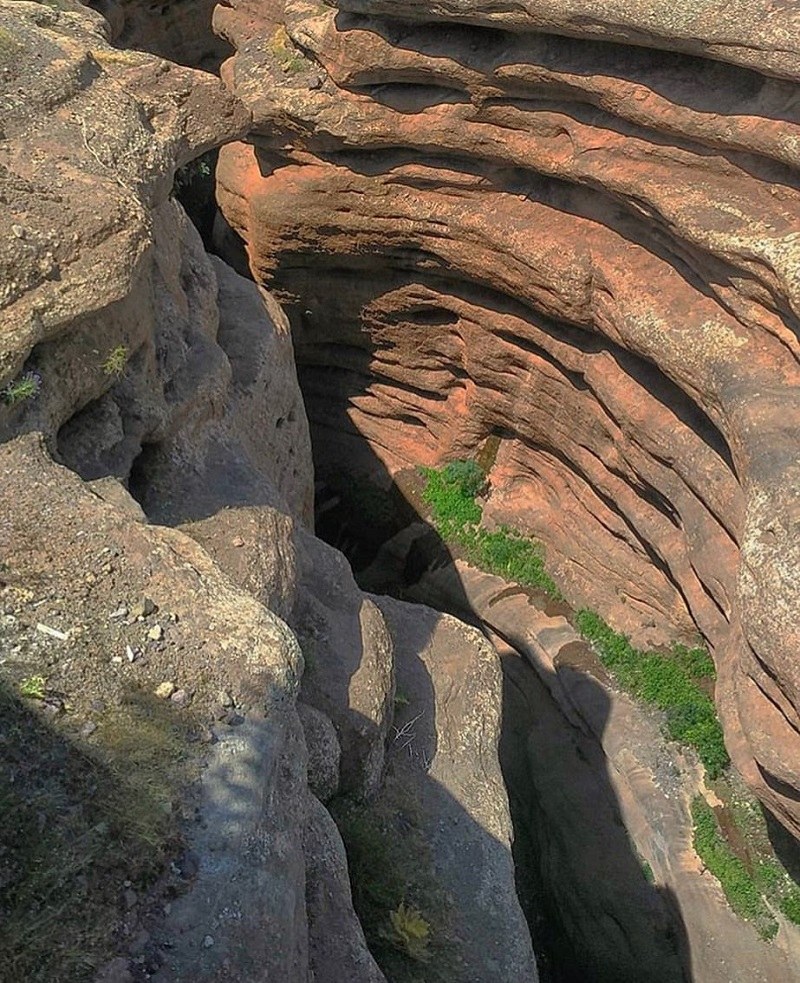
This valley is another natural attraction of Qazvin located on Qazvin-Alamut Castle. A metal walkway structure bridges this valley. Garma Galou has got a northeast to southwest direction and is located at an altitude of 1770 meters above sea level. The length of the valley is about 600 meters.






